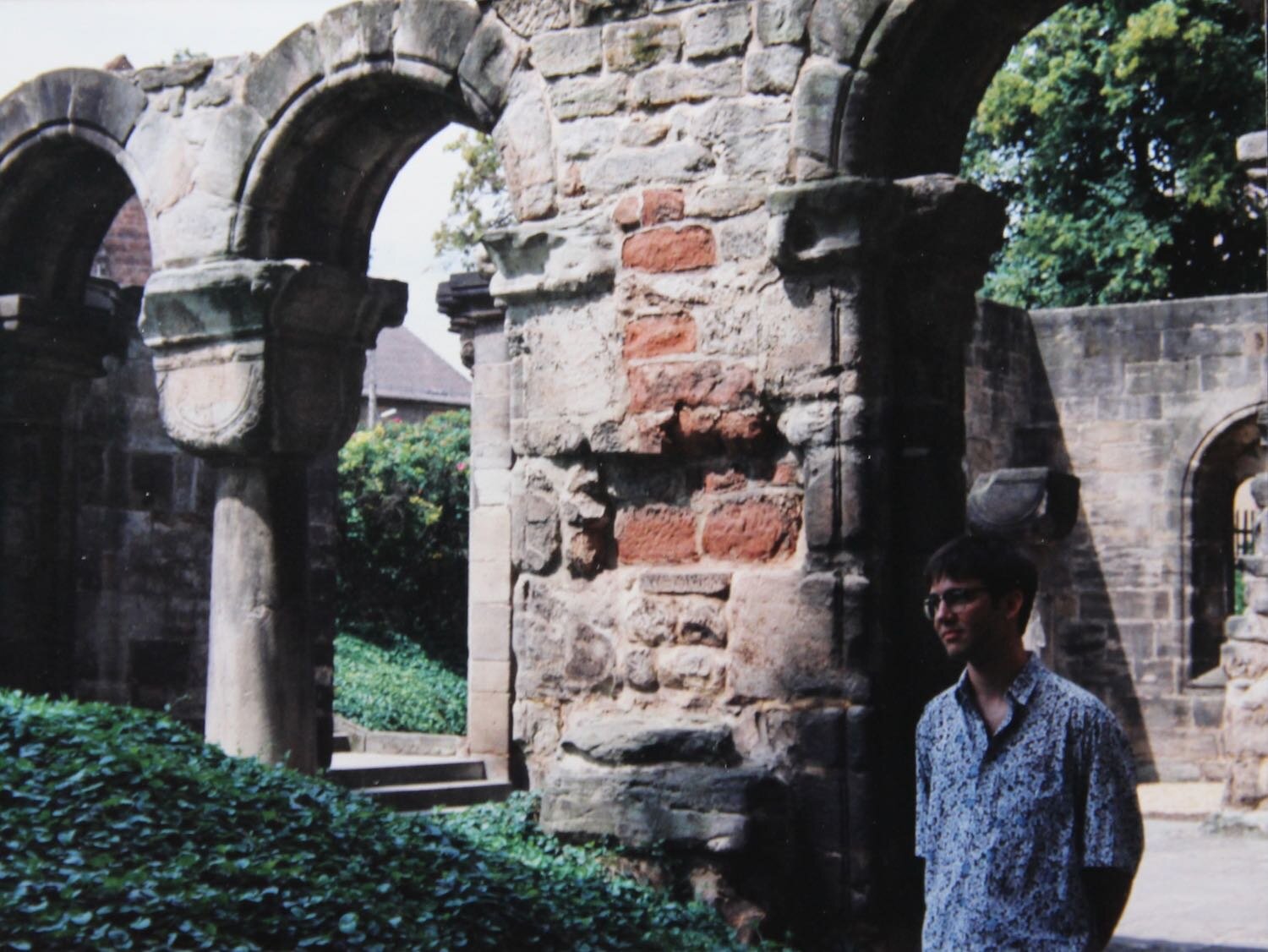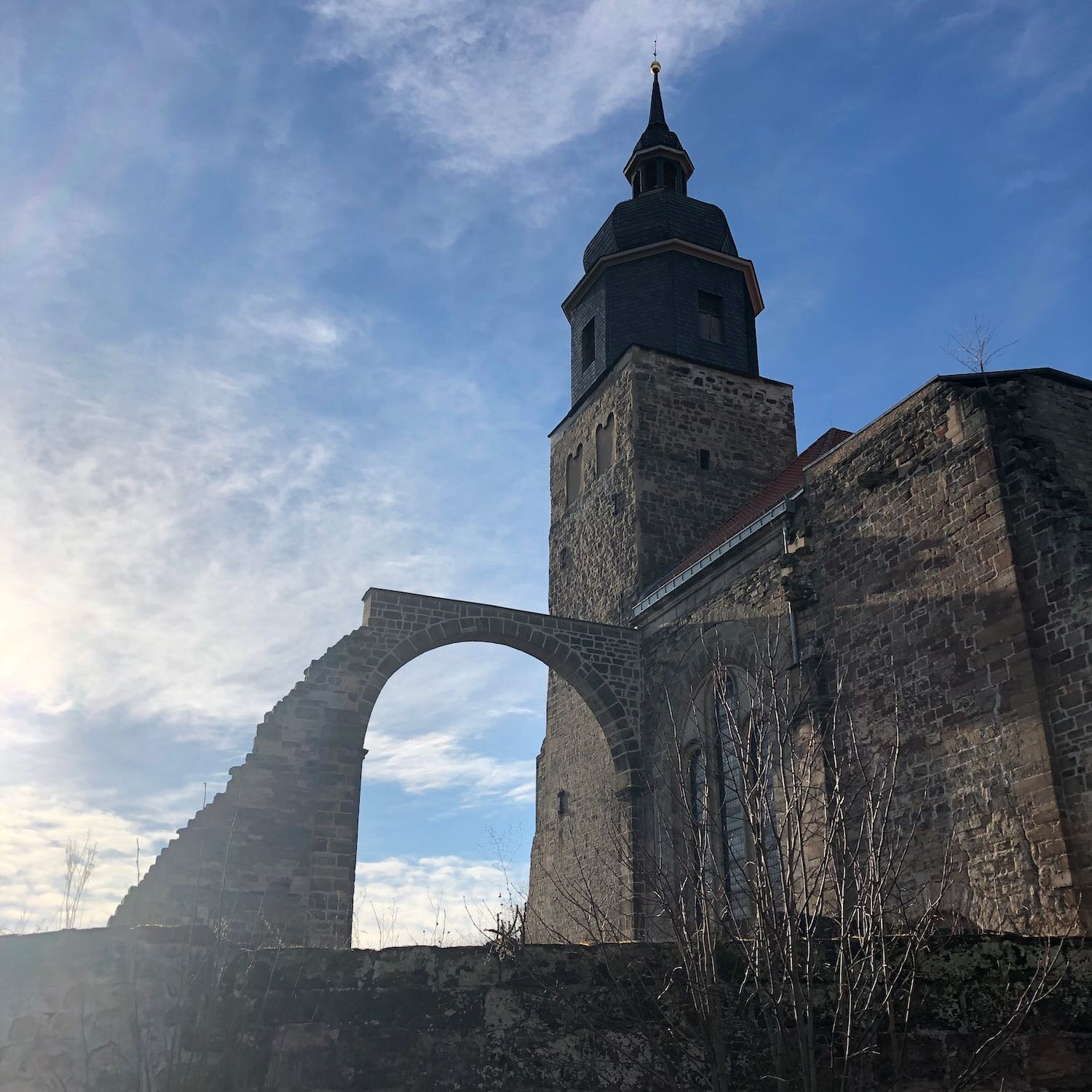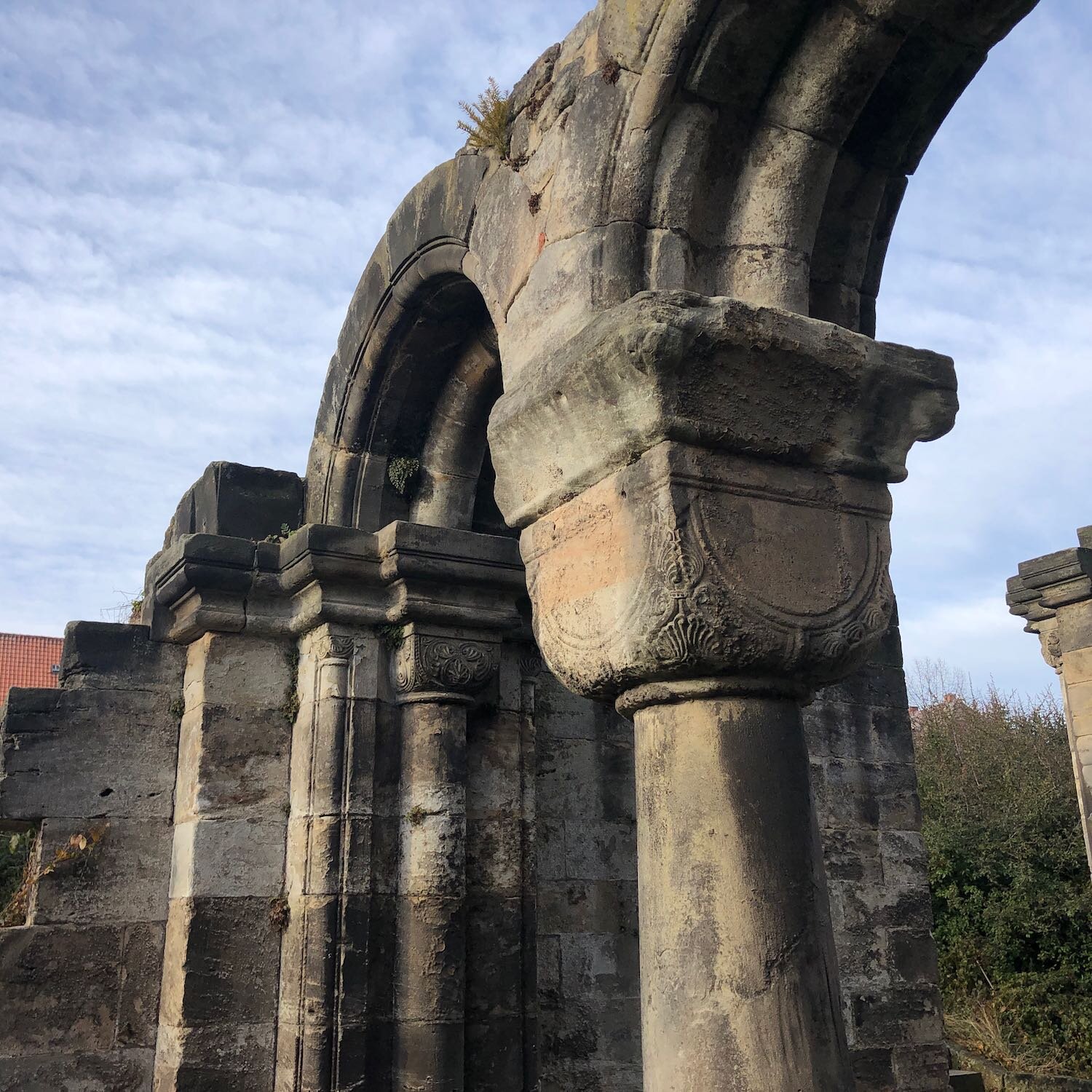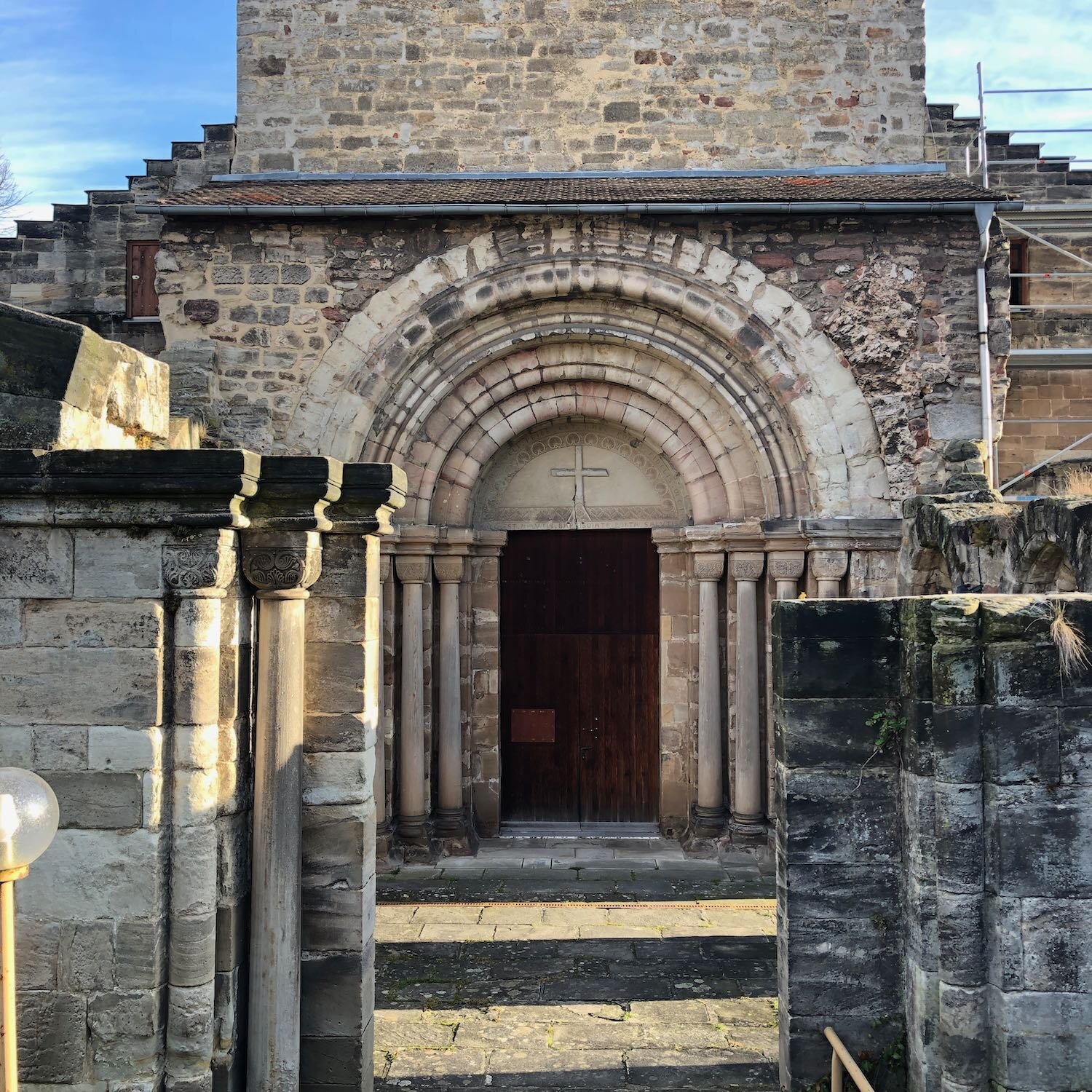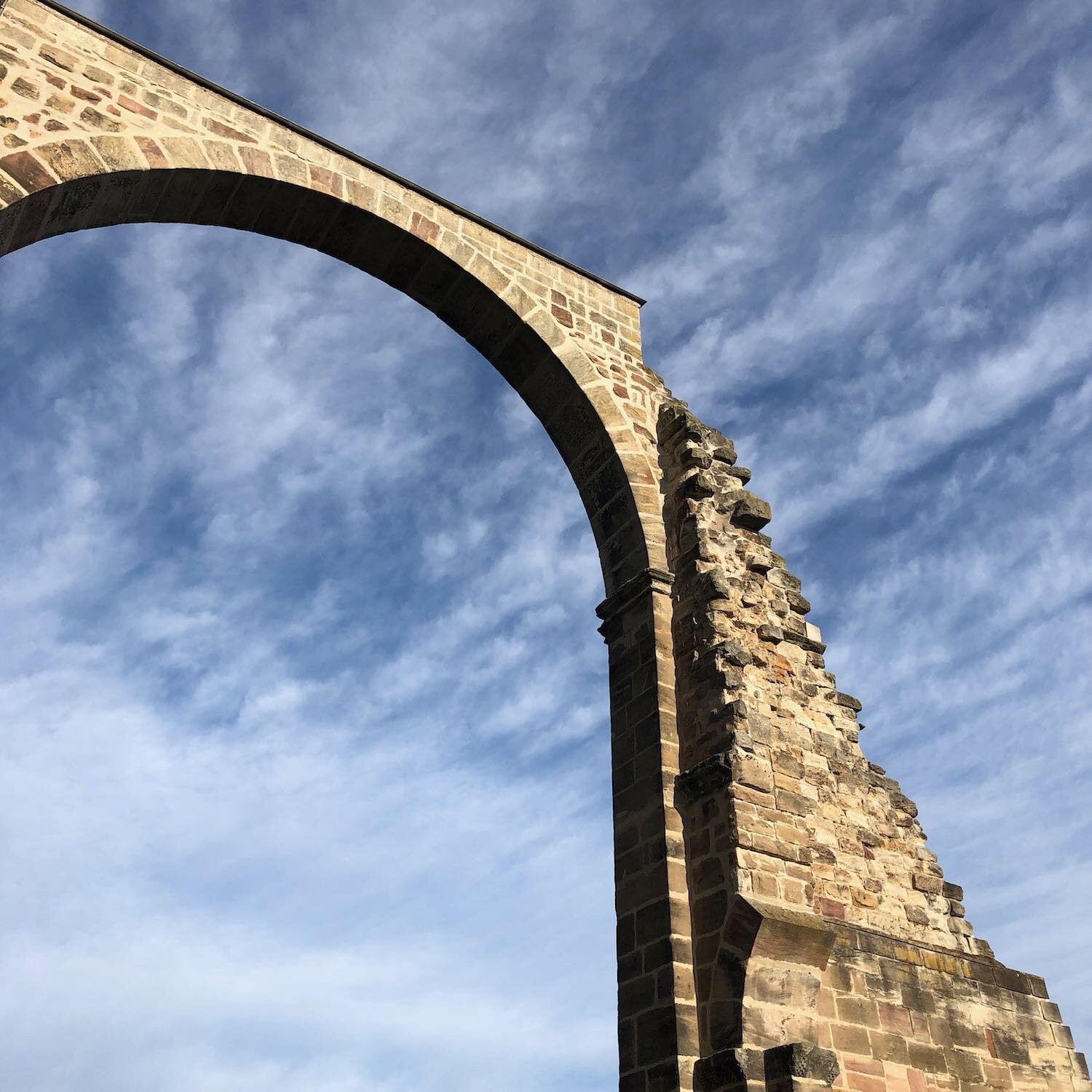Recently I was able to revisit a very important place in my life as an artist. The Klösterkirche Thalbürgel was built in the Romanesque style beginning in 1133 as the cloister for a Benedictine monastery, and a community of monks lived and worshipped there until the reformation. Today the church serves as a place of worship for both the Protestant and Catholic diocese, as well as hosting concerts and exhibitions.
I think of May 1993 as when I “really” became an artist. I finished undergrad with a 3-month study abroad term and lived with a family in the eastern German city of Jena. Up to that point in my life, when I referred to myself as an artist, I was accustomed to people (Americans) asking “but what do you do?” The “but” at the beginning of the phrase made it clear the question was not about what I did as an artist. In Germany I got the same question, however with no qualifying “but...” They wanted to know about my art. There was often a follow-up question. This kind of instant acknowledgement and engagement gave me so much confidence. I was able to shed somewhat my own internalized devaluation of what would be my life’s work, instilled in me from the culture of my upbringing.
During those months I interned with a ceramist in the nearby town of Bürgel, a center of a particular regional style of polka-dot decorated pottery called “Blauweiss.” Down a hill on the outskirts of the town was a smaller village with the medieval cloisters. The Klosterkirche was still mainly intact and in use but the rest of the site was a preserved ruin. Several days a week after work I’d walk to the cloisters for a few minutes before catching the bus back to Jena. The late spring and summer were warm but there was coolness, mystery, gravitas and solitude in the shadows there. I made so many drawings that summer based on the sloppy grid of the old stones, which set the stage for a group of paintings I exhibited in Lancaster, Pennsylvania in 1994...my first show as a “real” painter.
